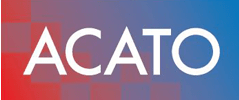Simplified Guide to ISO 9001 Internal Audit Process

ISO 9001 Internal Audit Process Simplified: Step-by-Step Guide to Conduct Effective Audits
Effective ISO 9001 internal audits ensure a robust Quality Management System (QMS) and drive continual improvement. Organizations often struggle with complex audit requirements, unclear procedures, and resource constraints—this guide promises clear definitions, practical mechanisms, and actionable benefits that streamline every audit stage. You will explore essential steps, compliance requirements in ISO 9001 and ISO 19011, checklist templates, real-world examples, and SME-focused simplification strategies to master your internal audit process.
What Are the Essential Steps of the ISO 9001 Internal Audit Process?
An ISO 9001 internal audit is a systematic evaluation of QMS processes to verify conformity and promote improvement. It identifies gaps against ISO 9001 clauses and uncovers opportunities to enhance customer satisfaction and risk-based thinking. For example, a mid-sized manufacturer used this seven-step flow to reduce nonconformities by 40%.
- Plan the audit program
- Prepare audit scope and criteria
- Conduct on-site assessment
- Document objective evidence
- Report findings to management
- Implement corrective actions
- Monitor effectiveness through follow-up
This structured approach builds a clear path from planning to continual improvement and leads into program design.
How Do You Plan an ISO 9001 Internal Audit Program?

Planning an ISO 9001 internal audit program defines scope, frequency, methods, and responsibilities to ensure impartial, risk-based evaluations. Planning establishes audit objectives aligned with clause 9.2 and organizational goals. A manufacturing QMS team, for instance, scheduled quarterly process audits based on process criticality and previous findings.
- Define audit objectives and scope
- Assign competent auditors with independence
- Establish audit frequency and schedule
- Allocate resources and communication channels
Clear planning lays the groundwork for thorough preparation and document review.
What Are the Key Activities When Preparing for the Audit?
Preparing for the audit involves reviewing procedures, selecting checklists, and gathering relevant records to streamline on-site activities. Proper preparation ensures auditors focus on evidence rather than logistics. Before a recent audit, a service provider compiled process maps and corrective-action records, reducing audit time by 20%.
- Collect and review QMS documentation
- Customize checklists for processes and risks
- Notify process owners and schedule interviews
- Verify auditor competence and independence
Solid preparation accelerates the audit conduct phase with focused evidence collection.
How Is the ISO 9001 Internal Audit Conducted Effectively?

Effective audit execution gathers objective evidence through interviews, observations, and document reviews. Auditors use standardized checklists to maintain consistency and identify nonconformities. In a pilot audit, cross-functional interviews revealed undocumented process steps that improved process mapping.
- Interview process owners and staff
- Observe operations against documented procedures
- Review records for accuracy and traceability
- Record nonconformities and positive practices
Structured evidence gathering ensures reliable findings and paves the way for clear reporting.
How Should Audit Findings Be Documented and Reported?
Documenting findings involves writing concise nonconformity statements, referencing ISO 9001 clauses, and highlighting opportunities. A well-structured report includes scope, objectives, methodology, findings, and recommendations. After one audit, a concise report format reduced management review time by half.
- Include audit scope, criteria, and methods
- List nonconformities with clause references
- Highlight opportunities for improvement
- Recommend corrective-action priorities
A precise report facilitates swift corrective actions and transitions into follow-up activities.
What Are the Follow-up Actions After the Audit?
Follow-up verifies corrective-action implementation and measures effectiveness to close the audit loop. It ensures that root causes are addressed and drives continual improvement. One organization’s follow-up process reduced repeat findings by 35% within six months.
- Review corrective-action plans and timelines
- Verify closure of nonconformities with evidence
- Update risk assessments based on audit results
- Schedule next audit cycle and track trends
Continual follow-up reinforces QMS health and leads into compliance requirements.
How Do You Meet ISO 9001 Internal Audit Requirements Explained?
Meeting ISO 9001 internal audit requirements combines adherence to clauses 9.2.1 and 9.2.2 with ISO 19011 guidelines for systematic audit management. Aligning both standards ensures audits are planned, executed, and improved consistently. For instance, integrating risk-based thinking from ISO 9001:2015 optimized audit focus on high-risk areas.
- Comply with ISO 9001 clauses on audit program and reporting
- Apply ISO 19011 principles of competence, objectivity, and evidence
- Use risk-based planning per ISO 9001 requirement
Aligning standards bridges procedural rigor and best-practice guidelines for a seamless audit lifecycle.
What Are the ISO 9001 Clauses Relevant to Internal Audits?
ISO 9001:2015 clauses 9.2.1 and 9.2.2 require organizations to plan, establish, implement, and maintain an audit program and report results. These clauses mandate:
- Program scope, frequency, and methods (9.2.1)
- Auditor competence, independence, and record requirements (9.2.2)
Meeting ISO 9001 Internal Audit Requirements Explained - ISO 9001 Help
ISO 9001:2015 clauses 9.2.1 and 9.2.2 require organizations to plan, establish, implement, and maintain an audit program and report results. These clauses mandate program scope, frequency, methods, auditor competence, independence, and record requirements.
ISO 9001 Help, 9.2 Internal Audit, [Year not specified]
This citation supports the article’s explanation of the specific ISO 9001 clauses relevant to internal audits.
How Does ISO 19011 Guide the Internal Audit Procedure?
ISO 19011 provides principles and guidelines for auditing management systems, emphasizing:
- Risk-based approach and process-based audits
- Auditor competence, impartiality, and ethics
- Evidence-based findings and clear reporting
- Program evaluation and continual improvement
ISO 19011: Guidelines for Auditing Management Systems - ASQ
ISO 19011 provides guidance on auditing management systems, including the principles of auditing, managing an audit program, and conducting management system audits. This standard is applicable to organizations needing to conduct internal or external audits of management systems.
ASQ, ISO 19011: Guidelines for Auditing Management Systems, [Year not specified]
This citation highlights the importance of ISO 19011 in guiding the internal audit process, as mentioned in the article.
How to Use an ISO 9001 Internal Audit Checklist Template?
An effective audit checklist template standardizes inspections, ensures coverage of critical processes, and accelerates report generation. Using a template reduces oversights and supports objective evidence collection.
What Should an Effective Audit Checklist Include?
Below is a sample structure for key checklist items and their purpose:
| Checklist Item | Purpose | Detail |
|---|---|---|
| Process Documentation | Verify documented procedures exist and are used | Cross-check SOPs, work instructions |
| Record Traceability | Confirm records support process outputs | Review logs, calibration certificates |
| Risk-based Controls | Assess risk mitigation and monitoring activities | Check risk registers and corrective-action logs |
| Management Review Input | Ensure audit results feed top-management review | Validate inclusion in review minutes |
This template ensures critical attributes are assessed consistently before customization begins.
How to Customize the Checklist for Your Quality Management System?
Customizing a checklist tailors audit depth and scope to process complexity, organizational size, and risk profile. To adapt a generic template:
- Map checklist items to your documented processes
- Adjust criteria based on past nonconformities and audit frequency
- Incorporate sector-specific regulations or standards
- Pilot the checklist in one department and refine
A tailored checklist aligns audit focus with organizational priorities and prepares for real-world audits.
What Are Common ISO 9001 Internal Audit Procedure Examples?
Procedure examples illustrate how theory translates into practice. Sample plans and evidence-gathering techniques guide implementation and reduce learning curves.
How Does a Typical Audit Plan Look for ISO 9001?
A concise audit plan outlines schedule, scope, and resources:
| Plan Section | Content | Value |
|---|---|---|
| Audit Objective | Verify process conformity to ISO 9001 | Sets clear assessment goals |
| Process Scope | Sales, production, and customer service | Focuses resources on critical processes |
| Audit Criteria | Clauses 4–10 of ISO 9001 | Ensures full standard coverage |
| Resources | Auditor, technical expert, meeting rooms | Allocates staff and facilities |
| Schedule | Dates, times, and process sequence | Provides transparent timeline |
This plan format enables efficient execution and clear stakeholder communication.
What Are Sample Audit Interview and Evidence Gathering Techniques?
Conducting insightful interviews and thorough evidence collection reveals process gaps and best practices:
- Use open-ended questions to explore procedure application
- Observe on-floor activities while referencing documented steps
- Request records and logs to validate process performance
- Cross-verify staff responses with actual operations
These techniques ensure audit findings are grounded in objective evidence and stakeholder insights.
How Can Small and Medium Enterprises Simplify the ISO 9001 Internal Audit Process?
SMEs face resource constraints, limited auditor availability, and simpler QMS structures that call for pragmatic audit approaches. Simplification boosts efficiency and reduces costs, helping smaller organizations maintain compliance without undue burden.
What Are Key Challenges SMEs Face in Internal Audits?
SMEs often encounter:
- Limited auditor expertise and time
- Overly complex templates and procedures
- Difficulty balancing audit rigor with day-to-day operations
Overcoming three main ISO 9001 challenges in SMEs - Advisera
SMEs often face challenges in ISO 9001 implementation, including documentation, dealing with outsourced services, and handling internal audits. These challenges can be addressed through various strategies, such as documenting procedures, using control vehicles for outsourced services, and training internal auditors.
Advisera, Overcoming three main ISO 9001 challenges in SMEs, 2017
This citation provides context for the challenges SMEs face in internal audits, as discussed in the article.
What Practical Tips Help SMEs Conduct Efficient Audits?
SMEs can streamline audits by:
- Combining audits for multiple ISO standards where applicable
- Using risk-based sampling rather than full-scope reviews
- Training internal auditors in cross-functional roles for flexibility
- Budgeting audit activities alongside ISO 9001 certification cost guidance (see ISO 9001 certification cost)
These tips enable SMEs to sustain effective internal audits and continual improvement with minimal overhead.
Effective internal audits form the backbone of a reliable QMS and promote a culture of continual improvement. By following this simplified, step-by-step framework—aligned with ISO 9001 clauses and ISO 19011 guidance—organizations of any size can achieve consistent compliance, uncover process insights, and drive quality excellence. For practical resources, customizable templates, and further support, explore our comprehensive audit toolkit or consult a qualified lead auditor to tailor your internal audit program to specific business needs.

